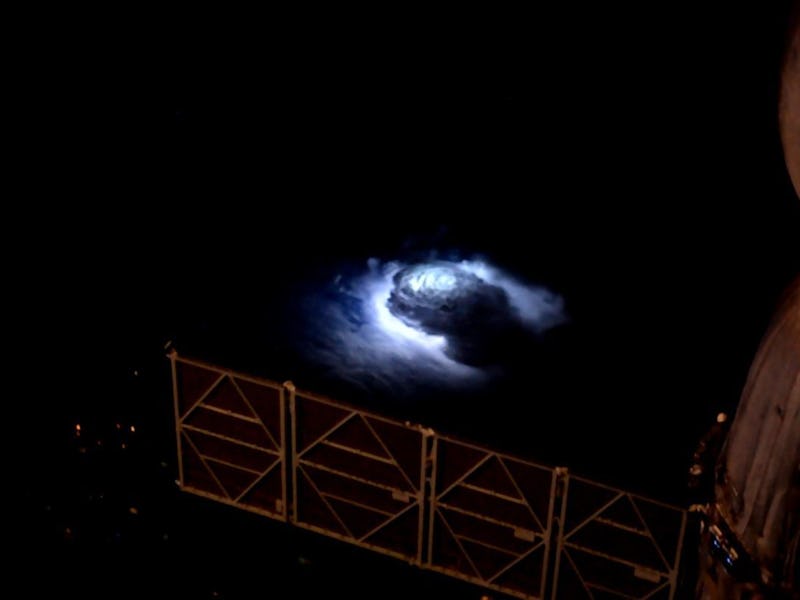When thunderstorms rage through Earth’s atmosphere, they can put on quite a show, especially from space. Extremely rare blue and red flashing lights have been observed from above the planet for decades. But, they occur in the blink of an eye, and have been nearly impossible to capture in images. That’s all changed now, thanks to a pretty epic experiment named after a Norse god.
In 2015, scientists devised a complex method for studying the lights that would combine the data of meteorological satellites, radars, and ground-based lightning detection systems to pinpoint the location of a storm and align it with the location of the International Space Station, which moves about 17,000 mph, to capture a phenomenon that lasts just 20 milliseconds. The nearly-impossible feat was named “The Thor Experiment,” after the Norse God of thunder and lightning. The name is fitting, as it would seemingly take a god to complete this mission.
But on September 8, 2015, the Thor Experiment was successfully carried out by a Danish astronaut, Andreas Mogensen, aboard the International Space Station.
It took a team of meteorologists on the ground to track the location of a storm headed for the Bay of Bengal on the eastern coast of India and coordinate the data with the location of the ISS, floating 240 miles above Earth, and headed straight for the storm.
With a window of time less than five minutes, Mogensen positioned his camera, and in just 160 seconds, he captured the highest quality images of the rare blue flashes to date. The images and detailed observations of the flashes were released to the public on January 9 in the journal The Geophysical Research Letters.
Andreas Mogensen became the first astronaut to capture the rare blue flashes in detail.
It was like catching the tooth fairy, or a leprechaun, but scientists were finally able to study something that had previously been very difficult to observe. The observations offer a new perspective of tropical thunderstorms. Though more data is still needed to fully understand these rare flashes, they seem to have a role in exchanging various gasses like nitrogen between the troposphere and stratosphere, possibly serving a significant role in balancing the radiation of Earth’s atmosphere.
